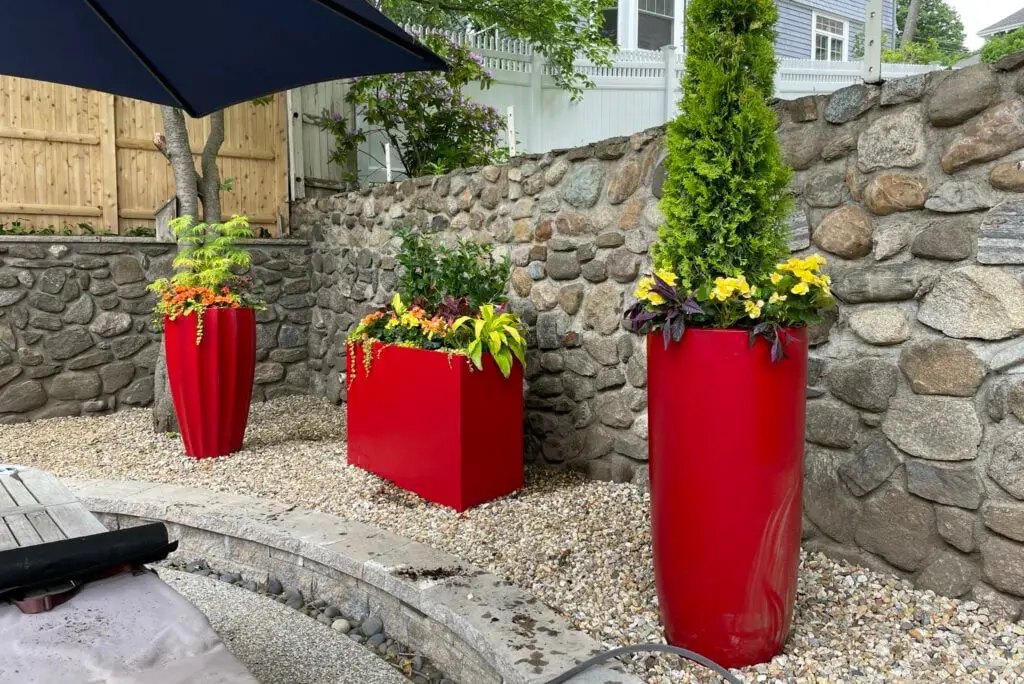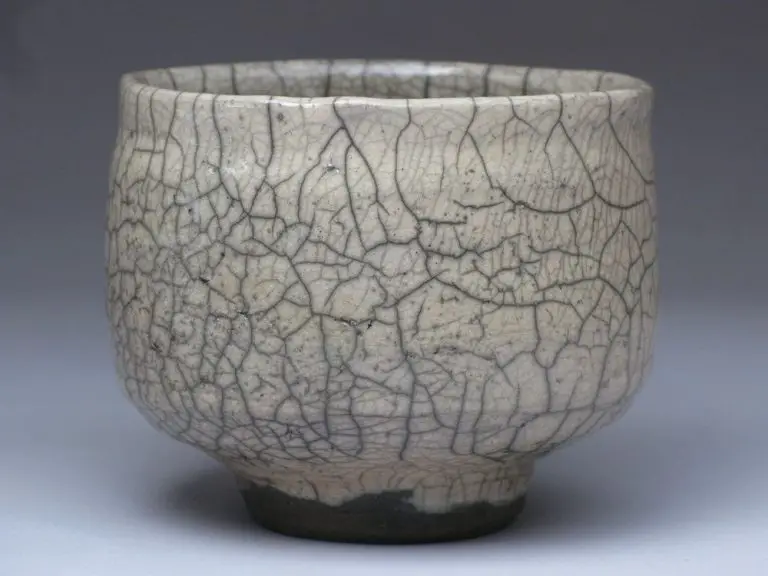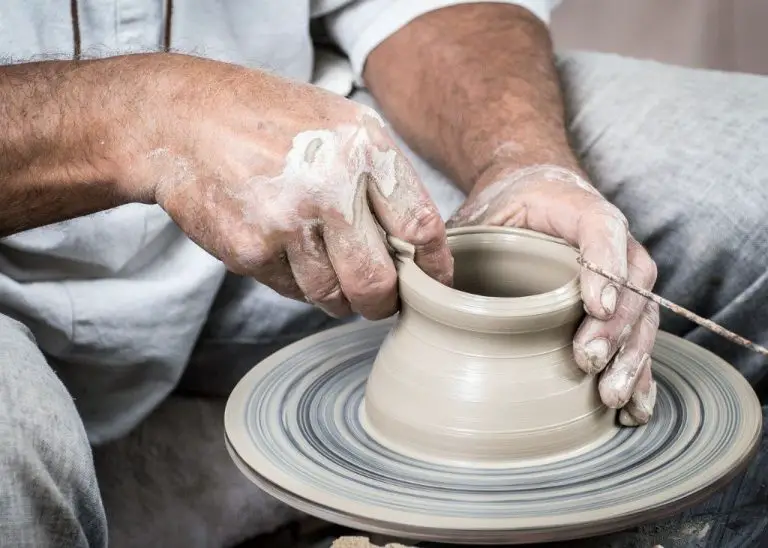Are Plant Pots Made Of Clay?
Plant pots have been used for centuries to grow plants, flowers, herbs, and more both indoors and outdoors. While clay was traditionally the most common material for plant pots, today there are pots made from a wide variety of materials including terra cotta, plastic, wood, metal, stone, and more. When selecting a plant pot, factors like durability, drainage, weight, aesthetics and cost all come into play.
This article provides an overview of the most common materials used for plant pots and planters. It explores the history, advantages, and disadvantages of each material to help readers decide what might work best for their needs.
Clay as a Traditional Material
Clay has been used to make pots and containers for plants for thousands of years. Clay is an excellent material for plant pots because of its porous nature and ability to retain some water [1]. The tiny pores in the clay allow air and water to penetrate the pot and reach the plant’s roots. At the same time, the clay holds onto some water to keep the roots moist between waterings.
Archaeological evidence shows that clay pots for plants date back to at least 6000 BC in ancient China, Egypt, and the Mediterranean [2]. In ancient times, clay pots were shaped by hand and baked dry in the sun or open fires. The Romans advanced pottery techniques and created elaborate terra cotta pots and planters. In the 18th-19th centuries, mass production of clay flowerpots emerged in England with companies like Wakefield Handmade [3].
Other Materials Used
While clay remains a popular choice, plant pots today are made from a variety of other materials as well. Some of the most common options include:
Plastic
Plastic planters are very common and inexpensive. They are lightweight yet durable, and come in many colors and styles. Plastic pots allow more flexibility in design compared to clay. However, lower quality plastic may degrade and crack over time when exposed to weather. Plastic is also less environmentally-friendly than natural materials (Jay Scott’s).
Metal
Metal planters like steel, aluminum and copper are strong, sturdy, and weather-resistant. They can have a modern, sleek look. However, metal conducts heat more than other materials, so may not be ideal for some plants. Metal is also prone to rusting and corrosion over time if quality and coatings are not sufficient (The Pottery Patch).
Concrete
Concrete planters are popular for their natural, neutral look and durability. They are heavier than other options though. Concrete is porous so must be sealed to prevent cracking, staining, and water damage. It can also develop efflorescence, a white powdery deposit (Jay Scott’s).
Wood
Wood offers a natural, rustic style. Cedar and redwood are common choices as they resist decay. Wood must be treated to withstand outdoor exposure. It is also susceptible to rotting, warping, and insect damage over time. Proper sealing is required (The Pottery Patch).
Advantages of Clay Pots
Clay pots have numerous advantages that make them a popular choice for many gardeners and plant owners.
One key advantage of clay pots is their porosity. The porous nature of terra cotta allows air and water to penetrate the sides of the pot, providing excellent aeration for the roots and preventing overwatering. This porosity creates a healthy environment for most plants (Source).
Another benefit is that clay is a natural material. Made of baked earth and clay, terra cotta pots are biodegradable and eco-friendly. Using natural clay pots aligns with sustainable gardening practices.
In addition to functionality, clay pots add visual appeal. Their earthy terra cotta coloring and handcrafted textures give gardens and indoor plants a classic, rustic look. The natural appearance of clay pots blends well in any setting from modern to traditional.
Disadvantages of Clay Pots
Clay pots have some notable drawbacks that may make other materials more appealing in certain situations:
Clay is a heavy material. A large clay pot can be very cumbersome to move around (Terracast Products, 2017). The weight also means clay pots are more prone to cracking if dropped or bumped.
Clay pots are prone to cracking in general. Their inflexible nature means even a small knock can cause a crack (Clever Bloom). Using clay pots outdoors in freezing weather increases the chances of cracking from expansion and contraction.
Clay is porous and will allow water to evaporate through the sides. This may require more frequent watering for some plants. Clay pots usually need to be sealed on the interior to help retain moisture (University of Nebraska-Lincoln Extension). Sealing adds time and cost to the use of clay pots.
Advantages of Other Materials
Many modern plant pots are made from materials like plastic, concrete, metal, and fiberglass rather than traditional clay. These alternative materials offer some key advantages:
Lighter weight – Plastic, concrete, and fiberglass pots are significantly lighter than thick, dense clay pots. This makes them easier to move around and reposition as needed. Plastic pots in particular are extremely lightweight and portable (Source).
More durable – Materials like concrete and metal are very hardy and withstand weather fluctuations better than porous clay. Plastic pots are also crack-resistant and more forgiving when dropped. Their durability makes them ideal for long-term use (Source).
Cheaper – Inexpensive plastic pots can cost a fraction of the price of artisan clay pots. Concrete and fiberglass pots are also typically cheaper, making these material options more budget-friendly for most gardeners and plant enthusiasts.
Disadvantages of Other Materials
While clay has some drawbacks, other common materials used for plant pots also have disadvantages that should be considered:
Plastic and resin pots are less porous than clay. This means they retain more water and provide less air circulation to the roots, which can encourage rot and other problems (source). Clay’s natural breathability is better suited for many plants.
Materials like plastic, resin, and concrete are not natural or sustainable. Clay comes directly from the earth and returns back to it at the end of its lifespan. Synthetic materials may take hundreds of years to break down (source).
There are also concerns that plastic and other synthetic pots may leach chemicals into the soil over time, potentially impacting plant health. Clay avoids this risk.
Most Common Choices Today
According to recent surveys and market research, the most popular materials for plant pots today are plastic, ceramic, and terracotta (https://gardenerspath.com/how-to/containers/plant-containers-pots-planters-material-best/). Plastic pots have become widely used due to their low cost and durability. In the USA, over 75% of commercial plant pots sold are made from various plastic polymers like polypropylene or polyethylene (https://jayscotts.com/blog/planter-materials/). Plastic pots are lightweight, affordable, and available in many colors and sizes. Ceramic and terracotta pots are also common, making up around 15% of the market. These natural clay materials provide porosity for plant roots and attractive styles, but can be more fragile and prone to cracking. Other less common options today include metal, concrete, and fiberglass, each with their own advantages. But plastic reigns supreme for its combination of low price, good durability, and light weight.
Considerations for Choosing a Material

When selecting a material for plant pots, there are several key factors to consider:
Plant Needs
The needs of the specific plants you intend to grow should guide your choice. For example, some materials like terracotta are porous and allow air and water to pass through. This can help prevent root rot for plants that need excellent drainage. Plastic and glazed ceramic, on the other hand, hold more moisture. These may work better for tropical plants or those that require more humidity.
Climate
Consider your climate and how pots will need to withstand the elements. In cold climates, plastic and resin may become brittle when exposed to freezing temperatures. Terracotta is more durable but also prone to cracking if water freezes inside. Wood also endures cold better than some options.
Cost
Material costs can vary greatly depending on quality. While inexpensive pots may seem appealing, higher quality materials often last much longer. Calculate cost over the lifecycle of a pot rather than just its initial price tag.
Aesthetics
The look and feel of the pot matters too. Terracotta and ceramic come in endless colors and styles for a traditional or elegant look. Materials like metal, wood, or concrete offer a more modern, sleek appearance. Consider the overall decor and ambiance you want to create.
Conclusion
Clay has a long history of being the primary material for making plant pots. It was widely used for thousands of years, and it remains a popular choice today. However, with modern innovations, gardeners and nurseries now have other materials to choose from as well, such as plastic, concrete, and wood.
The best material for a plant pot depends on factors like the type of plant, the climate, and personal preference. Some people still favor the classic, natural look of clay. Others may opt for lighter and more durable plastic pots. There is no universally “best” material – it comes down to the needs of the individual gardener.
In the end, clay pots are far from the only option today, though they do remain very common. Gardeners now have an array of materials to select from when deciding what type of pot works best for their needs and tastes.


